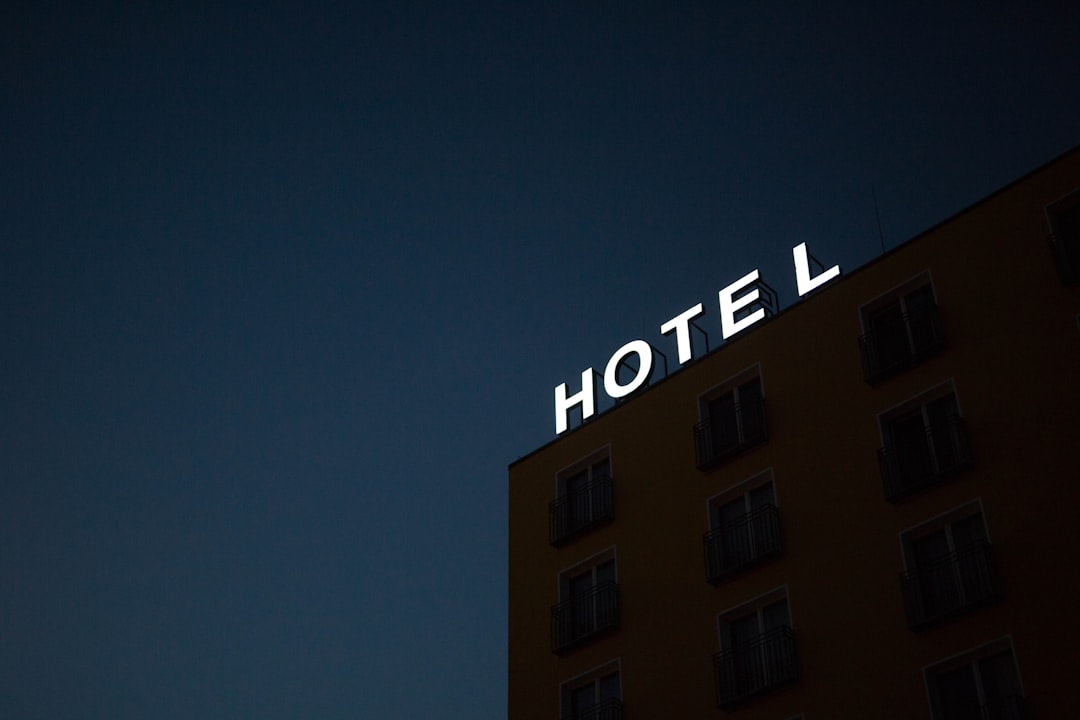The Stanley Hotel, nestled in the picturesque Rocky Mountains of Colorado, has a rich and storied history that dates back to its founding in 1909 by Freelan Oscar Stanley, a successful inventor and entrepreneur. Originally conceived as a luxury resort for the affluent, the hotel was designed to provide a serene escape from the hustle and bustle of urban life. Stanley, who was suffering from tuberculosis at the time, sought the fresh mountain air of Estes Park as a remedy for his ailment.
The hotel was built in the Georgian architectural style, featuring white clapboard siding and a distinctive red roof, which has become iconic over the years. The hotel quickly gained popularity among the elite, attracting notable figures from various fields, including politicians, artists, and writers. Its early years were marked by opulence and grandeur, with lavish furnishings and amenities that catered to the wealthy clientele.
The Stanley Hotel also played a significant role in the development of Estes Park as a tourist destination, helping to establish the area as a hub for outdoor recreation and relaxation. Over the decades, the hotel underwent several renovations and expansions, adapting to the changing needs of its guests while maintaining its historical charm.
Key Takeaways
- The Stanley Hotel was built in 1909 by Freelan Oscar Stanley, the inventor of the Stanley Steamer automobile.
- Stephen King was inspired to write “The Shining” after staying at The Stanley Hotel in 1974, where he experienced paranormal activity.
- The hotel is rumored to be haunted by several ghosts, including the original owner F.O. Stanley and his wife Flora.
- The Stanley Hotel’s design was influenced by the Georgian Revival and Colonial Revival architectural styles, featuring a grand staircase and expansive verandas.
- “The Shining” brought international attention to The Stanley Hotel, leading to an increase in ghost tours and events for visitors.
The Inspiration for Stephen King’s “The Shining”
Stephen King’s “The Shining,” published in 1977, is one of the most celebrated horror novels of all time, and its genesis can be traced back to King’s stay at The Stanley Hotel in 1974. King and his wife, Tabitha, visited the hotel during its off-season when it was nearly empty. The couple was captivated by the hotel’s eerie atmosphere and its remote location, which provided an ideal backdrop for inspiration.
During their stay, they occupied room 217, which would later become infamous in King’s narrative. The isolation of the hotel, combined with its hauntingly beautiful surroundings, sparked King’s imagination and led him to craft a story about a family that becomes ensnared by supernatural forces while caretaking an empty hotel. The Stanley Hotel’s ambiance played a crucial role in shaping the themes of isolation and madness that permeate “The Shining.” King was particularly struck by the hotel’s long hallways and empty rooms, which evoked a sense of foreboding.
He later recounted that he had vivid dreams during his stay, including one where he envisioned a river of blood flowing through the hotel’s corridors. This dream would ultimately influence some of the most chilling scenes in his novel. The combination of King’s personal experiences at The Stanley Hotel and his fascination with the supernatural culminated in a narrative that has left an indelible mark on both literature and film.
The Ghostly Legends and Hauntings at The Stanley Hotel

The Stanley Hotel is renowned not only for its historical significance but also for its reputation as one of the most haunted hotels in America. Over the years, numerous ghostly legends have emerged, captivating visitors and paranormal enthusiasts alike. One of the most famous spirits said to inhabit the hotel is that of F.O.
Stanley himself. Guests have reported seeing his apparition wandering the halls, often dressed in period clothing and exuding an air of benevolence. Many believe that he remains at the hotel to ensure that it continues to thrive as a beloved destination.
Another prominent ghostly figure associated with The Stanley Hotel is that of Flora Stanley, F.O. Stanley’s wife. Flora is often seen playing the piano in the hotel’s music room, where she is said to have entertained guests during her lifetime.
Visitors have reported hearing piano music emanating from the room even when it is unoccupied. Additionally, guests have claimed to experience unexplained phenomena such as flickering lights, cold spots, and disembodied voices echoing through the hallways. These eerie occurrences have contributed to the hotel’s reputation as a hotspot for paranormal activity.
The Architecture and Design of The Stanley Hotel
| Aspect | Metric |
|---|---|
| Year Built | 1909 |
| Architect | Freelan O. Stanley |
| Style | Colonial Revival |
| Design Features | Verandas, Steep Roof, Large Windows |
| Size | 142 rooms |
The architectural design of The Stanley Hotel is a testament to early 20th-century craftsmanship and elegance. Designed by architect McGirr, the hotel features a blend of Georgian and Colonial Revival styles that reflect the grandeur of its era.
The hotel’s iconic red roof stands out against the backdrop of the Rocky Mountains, creating a striking visual that has become synonymous with its identity. Inside, The Stanley Hotel boasts an array of beautifully appointed rooms and common areas that exude charm and sophistication. The lobby features a grand staircase and a massive fireplace that serves as a focal point for guests upon arrival.
Original furnishings and decor have been preserved throughout the hotel, allowing visitors to step back in time and experience the elegance of a bygone era.
This architectural integrity has played a significant role in maintaining the hotel’s historical significance while accommodating modern amenities.
The Impact of “The Shining” on The Stanley Hotel
The publication of Stephen King’s “The Shining” had a profound impact on The Stanley Hotel, transforming it into a cultural landmark within the horror genre. Following the novel’s release, interest in the hotel surged as fans sought to experience the location that inspired one of their favorite stories. This newfound fame was further amplified by Stanley Kubrick’s film adaptation released in 1980, which introduced “The Shining” to an even broader audience.
Although Kubrick’s film took creative liberties with King’s narrative, it solidified The Stanley Hotel’s association with horror and supernatural themes. As a result of this heightened visibility, The Stanley Hotel capitalized on its connection to “The Shining” by offering themed events and tours that celebrate its legacy within popular culture. The hotel has embraced its status as a haunted destination, attracting visitors from around the world who are eager to explore its ghostly legends and experience its eerie ambiance firsthand.
This transformation has not only bolstered tourism but has also allowed The Stanley Hotel to maintain its historical significance while adapting to contemporary interests.
The Haunted Tours and Events at The Stanley Hotel

To cater to its reputation as a haunted destination, The Stanley Hotel offers a variety of haunted tours and events that delve into its ghostly lore. One of the most popular offerings is the “Ghost Tour,” which takes guests on an exploration of the hotel’s most haunted areas while recounting chilling tales of paranormal encounters. Led by knowledgeable guides, these tours provide insights into the history of the hotel while highlighting specific locations where ghostly sightings have been reported.
In addition to regular tours, The Stanley Hotel hosts special events throughout the year that celebrate its haunted heritage. Halloween festivities are particularly popular, drawing large crowds eager to partake in themed activities such as ghost storytelling sessions, costume contests, and paranormal investigations led by experts in the field. These events not only enhance the guest experience but also foster a sense of community among those who share an interest in the supernatural.
The Famous Guests and Visitors of The Stanley Hotel
Over its long history, The Stanley Hotel has welcomed numerous famous guests who have left their mark on its legacy. Among them is author Stephen King himself, whose stay inspired “The Shining.” Other notable figures include former U.S. President Theodore Roosevelt, who visited in 1915 while on a hunting trip in Colorado.
Roosevelt’s presence added to the hotel’s allure as a destination for influential individuals seeking respite from their busy lives. In addition to political figures, many celebrities have graced The Stanley Hotel with their presence over the years. Musicians such as John Denver have performed at the hotel, while actors like Jim Carrey have stayed there during filming projects nearby.
These high-profile visitors have contributed to the hotel’s reputation as a cultural hub where creativity flourishes amidst stunning natural beauty.
The Future of The Stanley Hotel
As The Stanley Hotel continues to evolve with changing times, its future remains bright while honoring its storied past. Ongoing renovations aim to preserve its historical integrity while enhancing guest experiences with modern amenities. Plans for expansion may include additional accommodations or event spaces designed to accommodate larger gatherings while maintaining the hotel’s unique charm.
Moreover, The Stanley Hotel’s commitment to sustainability reflects contemporary values as it seeks to minimize its environmental impact while providing exceptional service to guests. By embracing eco-friendly practices and promoting local partnerships, the hotel aims to remain relevant in an increasingly competitive hospitality landscape. In conclusion, The Stanley Hotel stands as a testament to history, creativity, and mystery—a place where past and present intertwine seamlessly.
Its legacy continues to captivate visitors from around the world who seek not only luxury but also an encounter with something beyond the ordinary.
If you’re a fan of “The Shining” and want to visit the hotel where the movie was filmed, you may want to check out this article on the best travel razor. This article provides tips on how to pack efficiently for your trip, including what clothing items to bring along. It’s important to be prepared when visiting iconic filming locations like the hotel in “The Shining,” so having the right gear, like a travel razor, can make your experience even more enjoyable.
FAQs
What is the hotel in The Shining?
The hotel in The Shining is the fictional Overlook Hotel, which serves as the main setting for the novel and film.
Where was the hotel in The Shining filmed?
The exterior shots of the Overlook Hotel in The Shining were filmed at the Timberline Lodge in Oregon. However, the interior shots were filmed on a soundstage in London.
Is the Overlook Hotel a real place?
No, the Overlook Hotel is not a real place. It was created by author Stephen King for his novel The Shining, and the exterior shots were filmed at the Timberline Lodge in Oregon.
Can you visit the hotel from The Shining?
Yes, the Timberline Lodge in Oregon, which served as the exterior of the Overlook Hotel in The Shining, is a real hotel that is open to visitors. However, the interior shots of the hotel were filmed on a soundstage and do not correspond to the actual layout of the Timberline Lodge.
